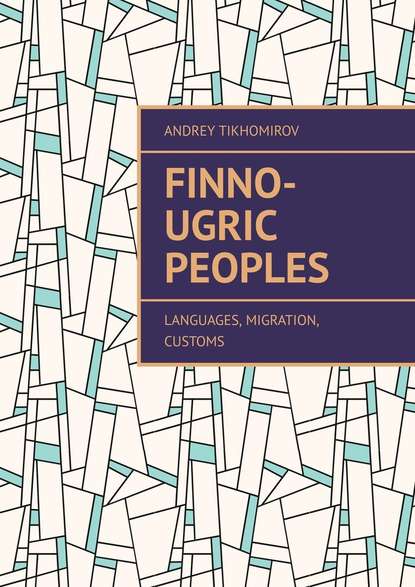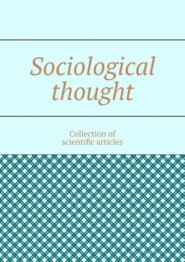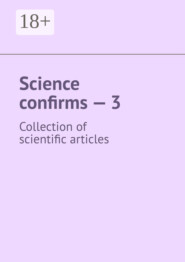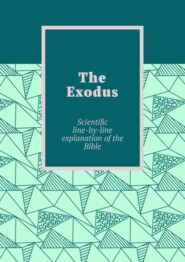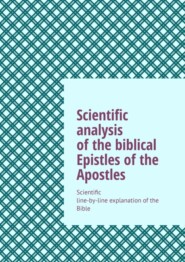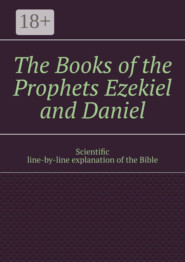По всем вопросам обращайтесь на: info@litportal.ru
(©) 2003-2024.
✖
Finno-Ugric peoples. Languages, Migration, Customs
Настройки чтения
Размер шрифта
Высота строк
Поля
Andrey Tikhomirov
The book tells about languages, peoples, migratory movements of Finno-Ugric peoples, about how the Finno-Ugric community emerges, about the formation of beliefs, customs, rites, rituals. Various historical and ethnographic sources of different times are involved. Brief grammars of some Finno-Ugric languages are given.
Finno-Ugric peoples
Languages, Migration, Customs
Andrey Tikhomirov
© Andrey Tikhomirov, 2020
ISBN 978-5-4498-2843-9
Created with Ridero smart publishing system
Finno-Ugric languages
Finno-Ugric languages (or Finno-Ugric languages) are a group of languages that are closely related to the Samoyed languages and together with the latter form a large genetic Uralic language family.
Finno-Ugric languages are divided into the following branches: Hungarian, represented by the Hungarian language; Ob-Ugric, consisting of the Mansi and Khanty languages spoken in the northern part of the Ob River basin; Baltic-Finnish with languages: Finnish, Estonian, Libyan, Vodsky, Vepsian, Izhora and Karelian; Sami, represented by the Sami language, spoken by the Sami (Lopari) living on the Kola Peninsula, in northern Finland, Sweden and Norway; Mordovian with two main dialects – Erzya and Moksha; Mari, consisting of meadow-east and mountain dialects; Permian, including the Udmurt language and the Komi language with the Komi-Zyryan, Komi-Permyak and Komi-Yazvin dialects.
Samoyed languages, family (according to other classifications, group) of languages as part of the genetic community of the Uralic languages. It includes languages: Nenets, Enets, Nganasan, Selkup, almost extinct Kamasin, extinct Matorian (motor), Karagas and Thai. Samoyans, out of date. – Samoyeds, (annalistic – samoyad) (from Samayemne, in the Sami language – the land of the Sami), 1) The old Russian name of the Sami and other peoples of the North of Russia and Siberia. 2) The obsolete name of all Samoyed peoples.
In addition, the so-called Ural race stands out, which occupies an intermediate position between the Mongoloid and Caucasoid races. Straight dark hair, dark eyes, sometimes a flat face, a strongly developed epicanthus (a narrow nose with a concave back) are characteristic. Distributed now in western Siberia (Khanty, Mansi, Northern Altai, etc.).
The Hungarian language is in close genetic relationship with the Ob-Ugric languages, making up the Ugric group of Finno-Ugric. The Hungarians, who once lived nearby with the Khanty and Mansi, occupied modern territory only in the 9th century. All other Finno-Ugric languages make up the Finnish group or the Baltic-Finnish-Permian group.
Hungarian, Finnish and Estonian languages are developed literary languages, I have an old written language on them. Mordovian, Mari, Udmurt, Komi, Khanty and Mansi as literary languages were formed only in the 20—30s. 20th century.
In the 2nd half of the 14th century Old Permian script was created in the Komi language, which fell into decay in the 18th century. Ancient Perm writing – writing written in the 14th century. missionary Stefan Perm on the basis of one of the ancient dialects of the Komi language. A special alphabet was compiled following the model of Greek and Slavic-Russian; translations of some liturgical books were made. Now out of use. Currently, small monuments are preserved from it in the form of inscriptions on icons and in manuscript books, alphabetical lists, etc. A valuable source for studying ancient Perm writing is the list of liturgies (the so-called Evgenievo-Lepёkhinsky texts), rewritten in the 17th century. Russian alphabet from Old Perm, which is a coherent text about 600 words in size. This writing in the 14—17 centuries. also enjoyed popularity among Russian Moscow scribes, who used it as a cryptography.
The most ancient written monuments are Hungarian (13th c.), Komi (14th c.), Finnish (15—16 cc.).
Common for modern Finno-Ugric languages are some affixes of conjugation, declension and word formation, inherited from the Finno-Ugric base language, as well as several hundred common roots. In Finno-Ugric vocabulary in certain languages, regular sound correspondences are observed. However, modern Finno-Ugric languages, due to their long separate development, have diverged far from each other both in terms of their grammatical structure and in terms of vocabulary; they also vary greatly in sound characteristics. Of the general grammatical features, the following can be noted: the agglutinative grammatical system, the use of postpositions (instead of the prepositions of Indo-European languages), the absence of prefixes (the exception is the Hungarian language), the immutability of adjectives in the position before the defined word (the Baltic-Finnish languages are the exception). In most Finno-Ugric languages, vowel harmony is observed. The vocabulary composition of individual languages was influenced by different languages of neighboring peoples, as a result of which the composition of foreign borrowings is not the same in different languages; for example, in the Hungarian language there are many Turkic and Slavic words, and in the Finnish there are many Baltic, German, Swedish and ancient Russian borrowings.
Modern Finns (Suomalayset) speak Finnish, which belongs to the Western, Baltic-Finnish group of Finno-Ugric languages. Anthropologically, they belong to the Baltic type of the Caucasian race.
Arkhipova N.P. and Yastrebov E.V. in the book “How the Ural Mountains were discovered,” Chelyabinsk, 2nd ed., South Ural Book Publishing House, 1982, p. 146—149, talk about the journey of the Hungarian linguist and geographer Antal Reguli to the Northern Urals in the 40s. 19th century: “Back in his student years, Reguli thought about the origin of the Hungarian language and the Hungarian people. Why does his country speak a language so different from the languages of neighboring countries? Where are the sources of the Hungarian language, where did the ancestors of modern Hungarians come from to Southeast Europe? Reguli I heard that the Hungarians were supposedly from the Urals, but this had to be proved. Having visited Northern Finland, he was struck by the kinship between the Finnish and Sámi (Lapland) languages, on the one hand, and Hungarian, on the other. To continue studying the Finno-Ugric languages and floor of personal relations, Reguli decided to go to Russia.The Hungarian Academy of Sciences allocated him 200 forints (which was equal to 200 gold rubles) for scientific research.In 1841 he arrived in St. Petersburg, where he quickly mastered the Russian language, continued to improve his knowledge of northern languages peoples.
Reguli understood: in order to find out the position of the Hungarian language in the system of languages of the Finno-Ugric group, its origin, it is necessary to penetrate the central and eastern regions of European Russia, the Urals and the Trans-Urals. There lived the mysterious Mansi people (Voguls), then little known in Europe. On October 9, 1843, the traveler traveled to the Urals through Moscow. October 27, he arrived in Kazan. Along the way, Reguli collects material about the language and life of the Mari (Cheremis), Udmurts (Votyaks) and Chuvashs. November 14, 1843 Reguli arrives in Perm, where he began his wanderings through uncharted lands. Having left Solikamsk on November 20, 1843, Reguli crossed the watershed of the Ural Mountains, reached the upper reaches of the Tura River, from where he headed along the eastern slope of the ridge to the north to the upper reaches of the Lozva River. Having lived for about three months among the Mansi, he travels to Verkhoturye, then to Irbit and then to the rivers Tavda and Tobol. In the spring of 1844, Reguli headed up the river Konda, then up the river Pelymu, along the waterway, in places on horseback or on foot next to the loaded horse. Following along the eastern slope of the Urals along the Northern Sosva River, it reaches the headwaters of the Lyapin River and its tributary Khulga in the Subpolar Urals. In the course of its route, Reguli collects the most valuable material on the lifestyle, life and language of the Mansi and Khanty. The tales and songs recorded by him reveal the spiritual world of these peculiar northern peoples. Wandering around a sparsely populated area, almost unknown to geographers, Reguli draws up schematic maps showing the names of mountains, rivers, and populated areas. September 29, 1844, reaching the Arctic Circle, Reguli arrived in Obdorsk (now Salekhard) – then a small village consisting of only 40 houses. By that time, the Ob was already frozen, and Reguli on deer along the tundra was heading to the northern tip of the Ural Mountains, reaching on October 21, 1844 the coast of the Kara Sea and the Yugorsky Shar Strait. It was the northernmost point (69° 45 “N) of his journey. In November, he arrives in the basin of the river Usa, in the region inhabited by Komi (Zyryans), and continues his research here. From there, crossing the Ural Mountains, Reguli goes to the mountains. Berezovo, but does not linger here, but along the Northern Sosva it goes up to the mouth of Kempazh. Following further along Northern Sosva, it reaches the sources of this river (at 62° N) inhabited by the Mansi, and only after that it again goes to the mountains. Berezovo. Here Reguli winters, tidying up his diaries. The Reguli trip through the Urals and the Trans-Urals took place in very difficult conditions: there was not enough equipment, there were no necessary devices. A Hungarian scientist rode a boat along turbulent rivers, riding a horse along mountain ranges, in sledges harnessed by deer or dogs, and often on foot. Usually he was accompanied by guides – Mansi, Khanty or Nenets. The inquisitive researcher was always close to the feelings and thoughts of ordinary people, he singled out and appreciated the noble features of their behavior and morals. Contrary to the prevailing notions of “savages” at that time, Reguli argued: “In the life of unicultural peoples there are traits that deserve universal recognition. In their social life, such phenomena are observed that indicate compassion and the absence of malevolence.” From Berezovo, Reguli sends information about his research to the Hungarian Academy of Sciences and to St. Petersburg. In a letter to K. M. Baer, he reports that he has established an undoubted connection between the Mansi language and the Hungarian language. The Mansi-Hungarian dictionary compiled by Reguli contained 2,600 Mansi words.”
The most valuable material brought from the Urals by Reguli was processed throughout the whole subsequent life. He prepared the main work, “The Vogul Country and its Inhabitants,” published in 1864 in Hungarian in Budapest after the author’s death. Reguli attached great importance to the study of the name of the area, in modern toponymy, which allows us to judge the resettlement of peoples in the past. He also built his ideas about the origin and history of such resettlement on the basis of a comparative analysis of languages, taking into account ethnographic data. Reguli has established a genetic link between the Finno-Ugric languages, which include the languages of Hungarians, Finns, Mansi, Khanty, Komi and Mari. He was particularly struck by the similarities between the Mansi and Hungarian languages. He came to the conclusion that the Hungarians came from ancestors who long ago lived in the Northern Urals and in the Trans-Urals, in the territory now inhabited by Mansi. These statements of Reguli are basically accepted by modern linguists. According to their ideas, the ancestral home of the Ugrians was located on a wooded area in the Kama basin and somewhat south. In the first half of the first millennium BC, tribes emerged from the Ugrian community, who later became the ancestors of the Hungarians. The remaining Ugrians remained on this territory for a long time, and in the 12th-15th centuries a part of the tribes moved beyond the Urals. In general, Reguli’s journey through the Urals and the Urals lasted about a year and a half (arrival in Solikamsk – November 1843, departure from Berezovo – March 1845). The length of its path amounted to 5.5 thousand km. Previously, not a single scientist has conducted such lengthy and thorough research here, did not proceed on such a vast territory. Reguli’s journey through little-known territory aroused interest in studying the nature and population of the Northern Urals and contributed to the development of the study of Finno-Ugric peoples.
Finno-Ugric migrations
The peoples speaking Finnish-Ugric languages, during their linguistic community, lived in the east and northeast of Europe, on the border of Europe and Asia, in the Ural Mountains. The Ural Mountains are the border between Europe and Asia, focusing on the Urals, we become Eurasians, since there is no division into “East” and “West”. It was here that the most ancient communities were formed, which later received the names of the Indo-Europeans, as well as other language families, in particular, the Finno-Ugric peoples. The chronological stages of the formation of the Indo-European community: 1. About 70 thousand years ago, some immigrants from Africa lived in the North Pole region, but as the glaciers approached (the Valdai glaciation corresponds to the Wurm, Vislins and Wisconsins), people began to retreat south; 2. From 70 to 11 thousand years ago, a period characterized by a general cooling, the continuation of the retreat of people from north to south of Eurasia; 3. From 11 to 10 thousand years ago, the Holocene period, the formation of the Indo-European community in the region of the South Urals. The “Great Steppe”, stretching between the South Urals, the Caspian Sea and the Aral Sea, becomes a place of migration of many peoples. The famous Indian public figure Tilak argued that the homeland of the Indians is the Arctic, as the ancient Vedas describe a territory where half a day and half a night.
In the area of the great Urals (Ural Mountains) at the end of the 4th millennium BC the oldest Ural community is formed, which includes the Finno-Ugric peoples (formed in a separate community at the end of the 3rd millennium BC) and Samoyedians (formed in a separate community at the end of the 1st millennium BC). At the end of 3 millennium BC.
.Finno-Ugrians migrate to the region of the Southern Urals after the departure of the ancient Indo-Europeans due to the depletion of bog iron ores (they were developed in the so-called Vary, archaeologists called these found settlements “the country of cities”). Based on the Ugric basic language at the end of the 3rd millennium BC – mid 1 millennium BC in the region of the South Urals, the right-Hungarian (Hungarians) and the Praobsko-Ugric (Khanty, Mansi) community of nations are being formed; at the end of 3 millennium BC e. – mid 2 millennium BC. On the basis of the Finno-Permian basic language, the Permian (Komi, Udmurts) and Finno-Volga (Mari, Mordovians, Saami, Finns, Izhora, Vodi or Vod, Veps, Estonians, Livas) community of peoples are formed.
The ancestral home of the Uralic (Finno-Ugric and Samoyedic) Turkic, Mongolian, and Tungus-Manchu languages was located on the northeastern periphery of Europe, which proves the reality of the existence of the most ancient Nostratic macro-family of languages. As archaeological cultures that could be correlated with the region of the pan-Indo-European cultural complex, scientists call the Khalaf, Ubeyd, Chatal-huyuk cultures in South-West Asia and Kuro-Araksin in Transcaucasia. The secondary intermediate ancestral home of the Indo-Europeans, according to these scientists, was the Northern Black Sea Region, where their resettlement dates back to the III millennium BC. South of the range of the Indo-European family, the core of the Semitic-Hamitic (Afrasian) language family may have formed. The carriers of the Kartvelian proto-language apparently lived to the north of the Indo-Europeans, and to the east of the Dravidian proto-language. This nostratic macro-family of languages includes Indo-European, Semitic, Hamitic, or Afrasian, Kartvelian, Uralic, Dravidian, Turkic, Mongolian, Tunguso-Manchu, Chukchi-Kamchatka and, possibly, Eskimo-Aleutian language families. The languages of this huge macro-family are now spoken by over 2/3 of the world’s population. Scientific studies have shown the validity of combining Indo-European, Semitic, Hamitic, Uralic, Altai and some languages into a large nostratic macro-family of languages. This macrofamily has developed in the Upper Paleolithic on the territory of South-West Asia and the regions adjacent to it. During the retreat of the last Wurm glaciation and climatic warming in the Mesolithic, the Nostratic tribes settled throughout the vast territory of Asia and Europe; they pushed aside and partially assimilated the tribes that had lived there before. In this historical process, the Nostratic tribes formed a number of isolated areas where the formation of special language families began. The largest of them, the Indo-European language community, began to form on the territory of the Southern Urals, and then in the “Great Steppe” – from Altai to the Black Sea.
For a very long time, such a linguistic community of ancient people was formed in the territory of the big Urals – Altai, as they later became known as Indo-Europeans – Arians. This is approximately 8—5 millennium BC, in 4—3 millennium BC this community began to break up, later they were divided into the eastern language group (Iranians, Armenians, Tajiks, Indians, etc.), Western Europeans (Greeks, Germans, Romanesque peoples, etc.), Slavs (Russians, Bulgarians, Poles, etc.), Balts (Prussians, Lithuanians, Latvians, etc.). For many millennia, peoples disappeared, appeared, assimilated with other ethnic groups, in particular, with Finno-Finns and Turks.
“Why did the most mysterious people of Russia disappear.” You are not Slavs, you are actually Finno-Ugric!” – such accusations of polemic enthusiasm are often addressed to Russian people by some residents of one country neighboring Russia, and then there is extensive reasoning that during the time of Kievan Rus, Finnish tribes inhabited the territory of present-day Central Russia, who supposedly are the ancestors of the current Russians. that such a meaningless and primitive demagogic device is used exclusively for propaganda purposes in order to amuse a wounded and not yet fully formed national identity. "Lenta.ru" tells how Such claims are untenable, but at the same time give us the opportunity to recall the little-known pages of our early history… We all know that the interfluve of the Volga and Oka has become not only the core of the Russian state, but also the place where the Russian people formed and entered the historical arena. But if you carefully look at the map of Central Russia, you can notice an amazing regularity – very many toponyms (names of geographical objects) are clearly of non-Slavic origin. For example – Moscow, Oka, Yakhroma, Veksa, Lehta, Nero, Tolgobol, Nerekhta, Pechegda, Kineshma, Kostroma, Chukhloma, Palekh, Ukhtoma, Shuya, Valdai, Seliger, Kirzhach, Klyazma, Koloksha, Khokhloma, Vireya, Pakhra, Taldom a lot others. And if you look at the historical map of a thousand years ago, you will find that this region at that time was almost exclusively inhabited by the Finnish tribes of Murom, Meshchera and Meria. Therefore, many of the above toponyms are of Finnish-speaking origin. And if the names of the Meshchera and Murom have survived to the present day in the names of the Moscow Region natural territory and the famous city of the Vladimir Region, then almost nothing has remained of the city. In ancient times, the Meri tribe occupied the vast territory of Zalesye from the banks of the Moscow River in the area of modern Zvenigorod to the Volga and Lake Galich. By the way, the current Galich in the Kostroma region, founded by immigrants from modern Galich in the Ivano-Frankivsk region of Ukraine (it was from him that the names Galichina and Galicia appeared), was originally called Galich Mersky. Merya lived in small settlements along the banks of numerous rivers and lakes, trying not to go far into dense forests. They were mainly engaged in gathering, hunting, fishing and cattle breeding. Archaeologists believe that before the Slavs appeared, agriculture in present-day Central Russia was almost absent. This is not surprising: the region was considered for a long time as a zone of risky agriculture. Due to adverse climatic conditions, the local soils often yielded very poor yields. Merya remained pagans, the cult of sacred stones was widespread among them. One of them – the Blue Stone – has been preserved on the shores of Lake Pleshcheyev near Pereslavl-Zalessky and still remains a place of worship for pilgrims. The dead people were burnt at large ritual bonfires along the banks of rivers and lakes. Scientists consider the Sarskoye ancient settlement, the tribal center of Meria, which existed on the southern shore of Lake Nero in the Yaroslavl Region from the 7th century, where archaeologists discovered a large number of silver coins from Europe. What then happened to the Sarskoye fortification, whether it had anything to do with the nearby Rostov the Great, which appeared in the 9th century, is still debated by historians. The Slavic colonization of Zalesye began at the end of the first millennium AD. It passed in waves from three directions. First, from the north-west and west (from the current Veliky Novgorod and Smolensk came here the Ilmen Slovens and Krivichi). Then from the south came Vyatichi, northerners and Radimichi. And finally, already at the time of the Old Russian State, the mass migration of residents of southern and southwestern Russia began on the territory of the Volga-Oka interfluve. It is curious that they often gave the names of their native places to the new cities built here: in addition to the already mentioned Galich, these are Vladimir, Pereyaslavl, Peremyshl, Vyshgorod and many others. Colonization of the region by the Slavs was so extensive that even in the pre-Mongol era, their numerical predominance became undoubted here… What then happened to the indigenous Finnish population? Where did it go: was it destroyed by the aliens, was it assimilated by them or went further into the forests? Apparently, basically the Slavic development of this territory was peaceful, which did not exclude individual clashes and conflicts. Archaeological evidence shows that for a long time, Slavs and Finns lived together or side by side. For example, in the Timerevsky settlement near Yaroslavl (the city itself was founded by Rostov Prince Yaroslav the Wise on the site of a small Finnish settlement), scientists found both Slavic and Merian, as well as Scandinavian burials. As for the latter, this should not be surprising – it was the Vikings who for a long time dominated this region. Apparently, due to the very weak population of Zalesia by Finnish tribes, by the beginning of the colonization by the Slavs, they subsequently completely disappeared among the newcomers.
Such rapid assimilation should not surprise: in addition to the fact that there were much more Slavs, they were at a higher level of socio-political development than the natives. For example, the historian Vasily Klyuchevsky wrote that the wild Finnish tribes “did not have veche meetings”, so characteristic of the inhabitants of Kiev, Chernigov or Rostov and Suzdal. During the development of Zalesye, the Slavic colonists primarily settled not on free territories, but on lands already developed by the local Finnish population. Perhaps it is precisely because of this that some part of the Merya, long lived in the interfluve of the Volga and Oka, then went further into the impenetrable forests of the Volga region. Some scholars identify these people with the modern Mari or even with the Mordovians (Erzya and Moksha). Some researchers believe that Meria still left an impressive legacy in our language. For example, only the Eastern Slavs have the possessive lexical “I have” characteristic of Finno-Ugric languages. And indeed, a Pole, Czech or Croat in such a case will say “I have.” The influence of the Merian language also explains the peculiarity of the declension of masculine nouns, where in the genitive case, along with the common Slavic form -u, -th (many people, bring tea), there is a variant typical of Finnish languages -a, -i (many people, bring tea). Proponents of this theory also derive many Russian dialect words from Finnish languages.
It is difficult to judge how true this is – the Meryan language has not survived to the present day and has not left reliable written sources. It was not possible to find his echoes in the local dialects of the Russian language, and the attempts of some enthusiasts to restore or construct the Meryan lexical system in the scientific sense look dubious. The question of the participation of Meria and other Finnish-speaking peoples in the ethnogenesis of the Russian people is still debatable. In Russian folklore, there are no obvious and distinct echoes of contacts with Finnish tribes who lived in this territory before the arrival of the Slavs. Most likely, this once again confirms the rapid and natural nature of their possible assimilation… However, in recent years, the movement of Meryan ethnofuturism has been rapidly developing in Russia, and interest in the history of the Finno-Ugric peoples has been noticeably growing. This is also manifested in the desire of individual enthusiasts to prove that the contribution of the Meryans to the formation of the Russian people was more significant than is still commonly believed. Some even try to artificially construct new sub-ethnic identities (for example, katskars in the Yaroslavl region) and prove that they, along with the Sitskars and Mologzhanians, remained the only direct descendants of the Meryan people. In any case, at the dawn of Russian history, the impact of the measure on the further development of our country was very noticeable. The modern archaeologist Andrei Leontyev believes that the history of this small Finnish people has essentially become the prehistory of North-Eastern Russia: “The geography of settlement prevailing in the era of mary, the external and internal relations of certain regions, largely determined the features of the formation of the original territory and centers of the Rostov principality.” Subsequently, the Rostov principality was transformed into the Rostov-Suzdal land (Suzdal-Vladimir Russia), which became the forerunner of the Grand Duchy of Moscow and the Russian state. As for the ignorant deniers of the Slavic origin of the Russian people, they should remember the following. Ethnic identity is primarily determined not by geneticists and anthropologists with their haplogroups and skullcuts, but by the national culture and language with which people relate to themselves. History knows many examples when completely different ethnic groups participated in the formation of many great peoples. The remarkable Russian writer Konstantin Ushinsky (buried, by the way, in Kiev) as early as the 19th century wisely remarked that “the Finnish tribe… it’s some kind of cement on which all the new northern, European states were laid, which even more applies to Russia. The Swedes, Danes, inhabitants of the entire Baltic coastal zone, Russians – all begin their history with some silent disappearance of Finnish tribes. It seems that they themselves constitute a prehistoric element and are dispersed along with the darkness that covers the life of a European person “…” Not your brothers to us "https://news.mail.ru/society/32637205/".
Russia – in Finnish Venäjä (read “veneia”); Estonian Venemaa (read “venemaa”, literally “land of boats”), apparently from the Wends, Wends – the ancient Slavic tribe; in Hungarian Oroszország (read “orosorsag”, literally “rosov country). Compare:" As for the name “Rus”, here we are talking about a pirate team with a name led by Rurik, somewhat consonant by chance, which gave rise to later confusion. Members A.M. in the book “In the footsteps of Dobrynya”, he writes: “Ordinary Scandinavian pirates were called in Norman rootkars or rutsmenami (literally” rowers”, meaning” ushkuyniki”). Among their neighbors, the Finns, the word turned into the ethnic name “Ruotsi” with the meaning “Pirate Country”. Take a look at today’s Finnish-Russian dictionary and you will find the country of Ruotsi in it now. But this is by no means Russia, but Sweden!”:
In Russia, there are many settlements (cities, villages, villages) that bear the non-Slavic ending -sha (for example: Kideksha, Iksha, Shileksha, Koloksha, Kovaks, Yundoks, etc.), which is likely in the ancient Finno-Ugric languages, meant a river or stream (for example, in the modern Mari language, “iksa” means a stream). They belong to the oldest Ugro-Finnish formants (the formed suffix with the ending) in Russia and originated in the II – I millennium BC. The forest zone of Central Russia is characterized by a Finno-Ugric substrate. Finno-Ugric tribes occupied as far back as II – I millennium BC. vast expanses of Eastern Europe. The names of rivers (hydronyms) ending in -sha, -xa, are spread over a vast territory from the right bank of the Oka to the White and Barents Seas, but mainly, as archaeologist V.V. Sedov found out, where monuments of the Volosovo archaeological culture of the late Neolithic era are found. Thus, it is established that this culture was abandoned by the most ancient Finno-Ugric tribes on the territory of our country. The formants -ma, (Ukhtoma, Andoma, Kema, etc.), and -oga, -ega, -uga, -yuga, meaning the river, are also associated with these tribes. In modern Finno-Ugric languages, “yokki”, “yoggy” means a river): Andoga, Lindega, Vetluga, Uftiug, etc. According to the most common hypothesis, the origin of the names of the Oka and South rivers, which simply meant “river,” in Estonian – jõgi. A possible explanation of the origin of the Moscow river, hence the name of the city, from the Old Baltic word “nodal river” – “mosk” – node, “Wandou” – river. Modern Latvian: knot – mezgls; Lithuanian – mazgas. The Baltic (Baltic) languages include modern Latvian, Lithuanian, as well as extinct: Prussian, Yatvyazh, Curonian, Selonian and some others, were in ancient kinship with Slavic languages. The Baltics (Baltic tribes), settled in the 1st millennium AD, the territory from the south-west of the Baltic states to the upper Dnieper and the Oka River basin (ropes), at the turn of the 1st – 2nd millenniums became part of the Old Russian nationality. Western Balts (Zemait, Zemgale, Curonian, Latgale) are the ancestors of modern Latvians and Lithuanians. However, in the Old Finnish languages, “va” means water, Estonian vee means water, in Hungarian it means víz, and in Finnish it means vettä. The ending is typical for many Finno-Ugric hydronyms (Lysva, Sylva, Kosva, etc.). The oldest Finno-Ugric names, according to some scholars, are associated with numerous names of rivers ending in -shma, -shma, -shma, -shma (Klyazma, Vyazma, Kineshma, Kesma, etc.). This group of formants probably belongs to an unknown yet dofinugorsk substrate. The question of the etymology of the Volga is ambiguous. Her ancient name Ra, mentioned by ancient authors, despite the existence of various hypotheses on this subject, remains unclear. In the Turkic languages, the Volga was called Itil (Idel, Atal, Atil), which means “river.” Hence the assumption that the Russian name of the river comes from the Slavic “moisture” (Russian – “vologa”) and originally could also mean simply “river”. However, there is another hypothesis – about the Finno-Ugric origin of the hydronym: in Estonian, “valge” means “white, light”; Then the Volga can be translated as the White or Light River.
Вы ознакомились с фрагментом книги.
Приобретайте полный текст книги у нашего партнера:
Приобретайте полный текст книги у нашего партнера:





